PEMB have increased in popularity.

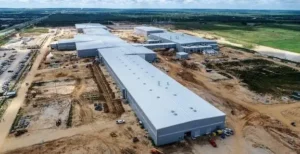
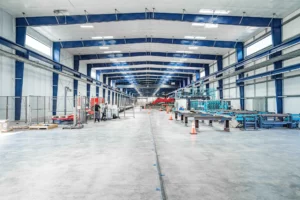
Pre engineered steel buildings can streamline vendor management & maximize construction schedules. They are cheaper and faster to construct than traditional building methods, more durable, require less maintenance and can be used for various applications.
In this guide, we’ll cover everything you need to know about pre engineered metal buildings, from their history & benefits to the different types of PEMBs available, and how to choose the right one for your project. By the end, you’ll have all the knowledge you need to make an informed decision.
What Are PEMB Pre Engineered Metal Buildings?
Pre engineered metal buildings (PEMBs) are structures made from prefabricated parts that are assembled on-site.
PEMBs first became popular in the 1930s, when they were used for things like airplane hangars and grain storage facilities.
Today, they are commonly used for various applications, including PEMB data centers, office buildings, warehouses, retail space, and manufacturing plants.
PEMB are made up of three main parts: the primary framing, the secondary framing (which supports the primary framing), and the metal cladding or panels (which covers the outside of the building). The primary framing is usually made out of steel, while the secondary framing and cladding can be made out of either steel or aluminum.
Advantages Of Pre Engineered Metal Buildings
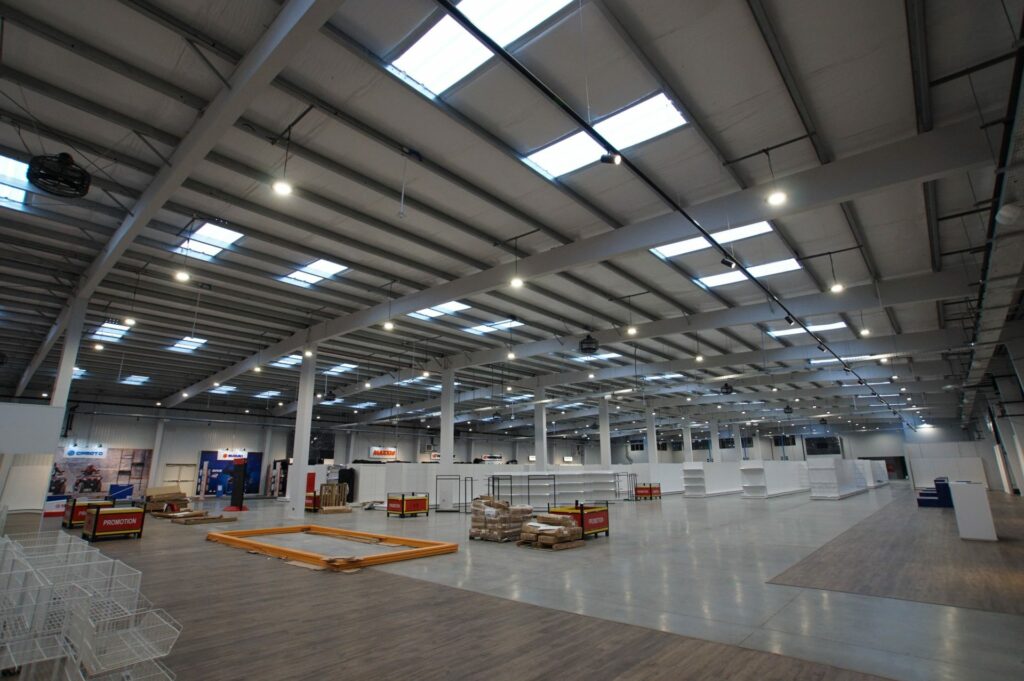
There are many reasons why pre engineered steel and metal buildings have become so popular in recent years. Here’s a few:
Cost-Efficient
Pre engineered steel buildings are notably cheaper to construct than traditional buildings because their components are prefabricated off-site, reducing labor costs.
Key cost-saving factors:
- Labor and Construction Savings: Involving the manufacturer early in the design stage allows for precise off-site fabrication, cutting down on labor and overall site costs.
- Reduced Heating and Cooling Costs: These buildings are designed with effective insulation, lowering energy expenses.
- Lower Insurance Premiums: Steel buildings are resistant to wind, water, fire, and other elements, leading to lower insurance costs.
- Lower Maintenance Costs: Steel buildings require minimal maintenance and are not susceptible to pests, reducing long-term upkeep expenses.
Time Savings
PEMBs are faster to construct. Once the components have been delivered to the construction site, they can be assembled relatively quickly. This is in contrast to traditional building methods, which often take months, or even years to complete.
Having all the materials in one place helps with timing the project and allocating duties to the workforce. By buying all your pre engineered metal building components from one supplier, you can effectively improve the rate of building and finishing the installation. This is made possible through:
- A clear vendor management system.
- Material accuracy and compatibility, designed by the same manufacturer, all feature the correct measurements.
- Code compliance — all the materials are made with the building codes of the specific area in mind.
- Minimal site disruption.
- Timely delivery of all components before commencing the project.
- Early access to the site to set up the post-erection trades.
Reliability And Durability
Another major benefit of pre engineered metal and steel buildings is that they are more durable than traditional structures because they are made from steel, which is one of the strongest materials available. Steel buildings can withstand high winds and heavy snow loads, making them ideal for locations prone to extreme weather conditions.
Customizability
Pre engineered steel and metal buildings are versatile in nature. This means that the engineers and fabricators can play around with different designs to meet the customer’s needs. These designs can be customized to fit industrial, commercial, residential storage or warehouse, or agricultural steel buildings. Allied Steel has majored in manufacturing complex and straightforward metal fabrications that give room for flexibility. This way, you have a leeway when it comes to designing the building’s length, height, and width with the addition of accessories for better results. Some customizable qualities of PEMBs include:
- They can be designed to meet specific local code requirements.
- They can be designed with taller ceilings to accommodate tall racks and shelves.
- PEMBs can be outfitted with various doors, windows, roll-ups, and other features to suit the specific needs of the business.
- You can customize framing options featuring a clear span, modular auxiliary, and single-slope.
- Additionally, they can be designed with a variety of different roof styles. The most common roof style for PEMBs is the gable roof, but other options include the hip roof and the gambrel roof.
Sustainability
Finally, pre engineered metal and steel buildings are easier to maintain than traditional buildings. They do not require as much upkeep and can often last for decades with little to no maintenance.
PEMB Commercial Applications
PEMBs are commonly used for commercial applications, such as office buildings, warehouses, and retail spaces. They are a great choice for these types of applications because they are faster to construct than traditional buildings and can be designed to meet specific local code requirements.

Steel buildings are also becoming increasingly popular for use in manufacturing plants. They are more durable than traditional buildings and can be outfitted with a variety of doors, windows, and other features to suit the specific needs of the business. PEMBs are still used for agricultural applications, such as grain storage facilities and livestock barns. With the increase in Bitcoin mining, many producers are turning to pre engineered buildings to house their computer setups.
Types of Buildings That Can Be PEMB Pre Engineered
The pre engineered construction process has numerous applications for commercial use. The concept behind pre engineered buildings is rapidly gaining popularity amongst a wide variety of industries. Some of the structures that can be pre engineered include:
- Community and recreational centers
- Warehouses
- Barns and agricultural housing facilities
- Industrial and commercial buildings
- Garages, workshops, and recreational storage facilities
- Storage facilities
- Data mining facilities
Available Sizes For Pre Engineered Metal Buildings
PEMBs come in a wide range of sizes to accommodate various needs. Here are some common dimensions and their typical applications:
Small-Scale PEMB (Under 5,000 square feet)
Storage sheds: 8×10 ft, 10×12 ft, 12×20 ft
Workshops: 12×24 ft, 16×24 ft, 20×30 ft
Garage additions: 12×24 ft, 16×24 ft, 20×24 ft
Medium-Scale PEMB (5,000-10,000 square feet)
Commercial garages: 20×40 ft, 24×40 ft, 30×60 ft
Retail spaces: 20×40 ft, 30×60 ft, 40×80 ft
Agricultural buildings: Barns, greenhouses, equipment sheds
Large-Scale PEMB (10,000+ square feet)
Warehouses: 40×80 ft, 50×100 ft, 60×120 ft
Industrial facilities: Manufacturing plants, distribution centers, Data Centres
Commercial buildings: Retail centers, office buildings
Note: These are just a few examples, and PEMB can be customized to almost any size or shape to meet specific requirements.
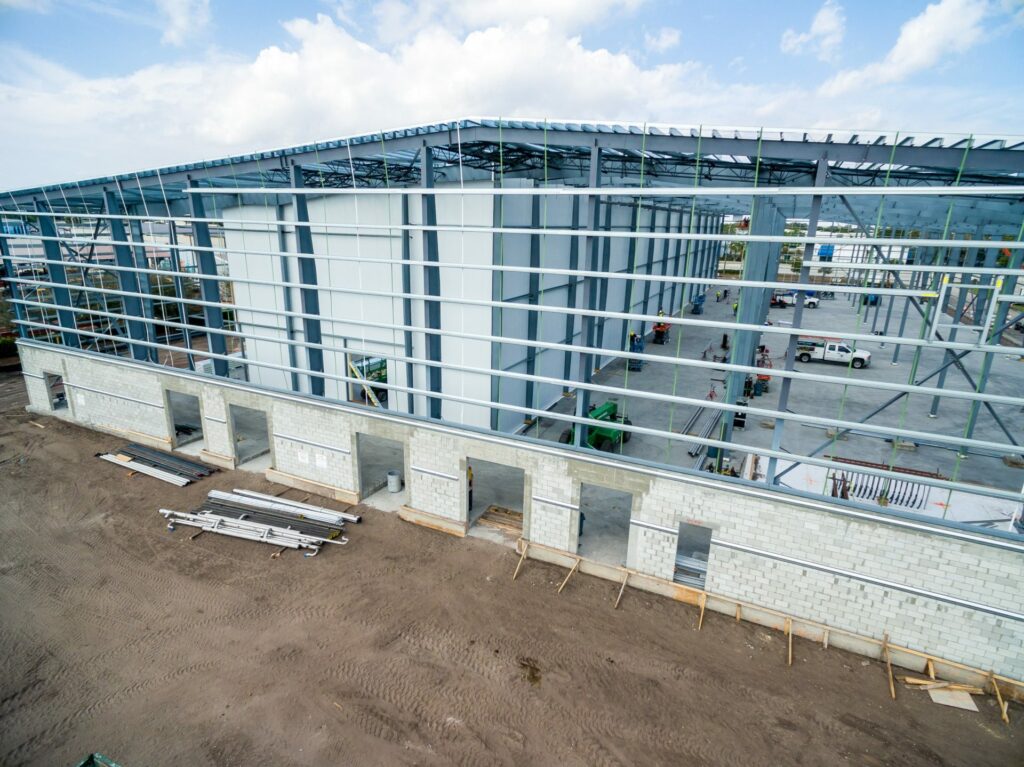
PEMB Components
Orientation
The orientation of your steel structure has the potential to have a significant impact on its energy efficiency. This is feasible, because you may work with the Sun rather than against it by properly orienting your facility. In other words, you can use the Sun’s heat during the winter months and avoid using it during the summer. You can significantly boost your energy efficiency and save a lot of money by taking just a little time and effort to position your metal construction correctly!
3 Unique Frame Types
There are three types of pre engineered metal structures: clear span, single slope, and multi-span.
1. Clear Span
Clear span pre engineered metal buildings have no support beams or columns in the middle of the structure. This gives you a completely open floor plan that can be used for various purposes.
2. Single Slope
Single slope pre engineered metal buildings have a sloped roof that allows snow and rain to run off easily. This is ideal for locations that receive a lot of precipitation.
3. Multi-Span
Multi-span pre engineered metal buildings have more than one span, or support beam, in the middle of the structure. This gives you more flexibility in design and layout.
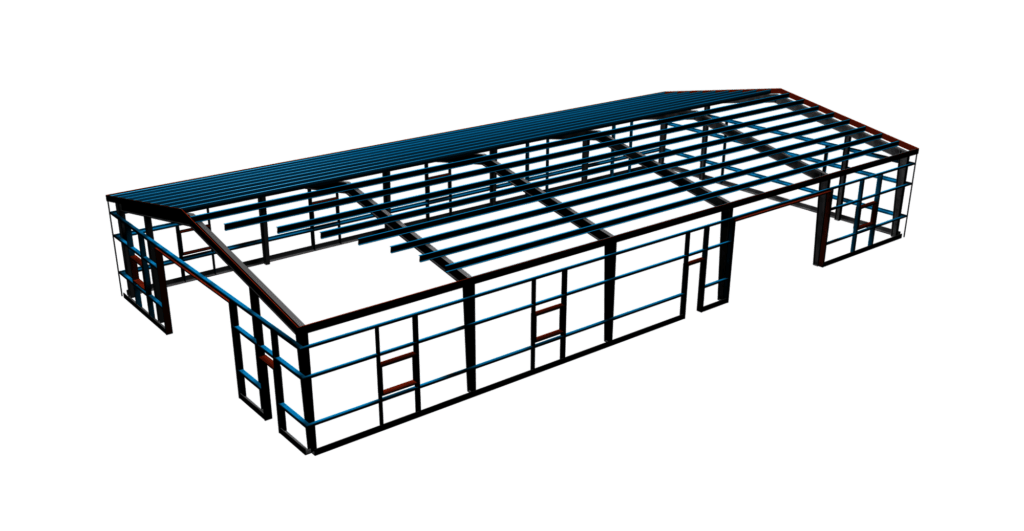
Pre Engineered Metal Buildings Framed Openings
All window, door, and bay openings can be customized to meet your specific needs.
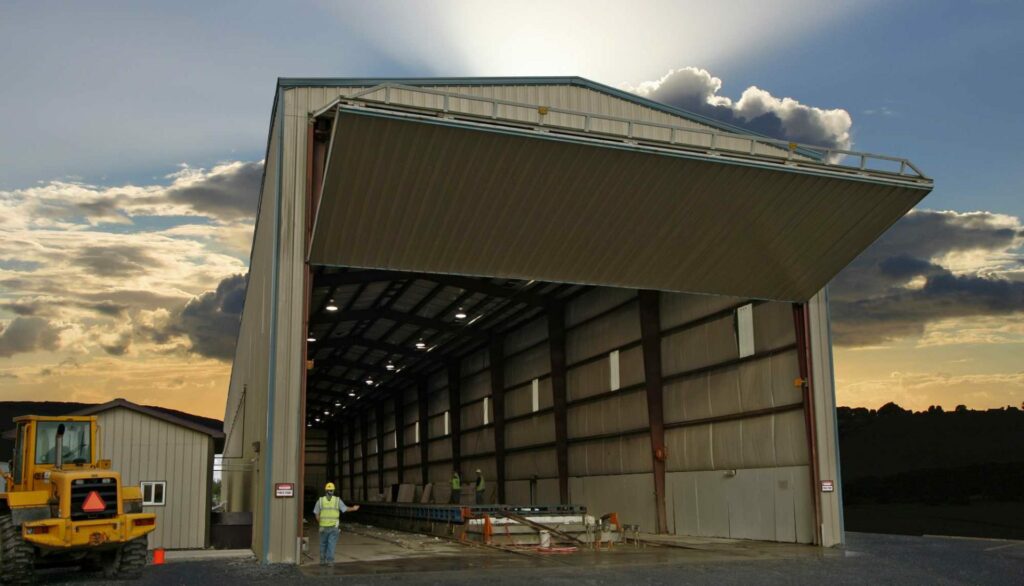
Panels
There are several different panel profiles available in a variety of shapes, colors, and textures.
Insulation
You can use conventional fiberglass insulation batts for insulation, or choose pre-built insulated panels for the walls and roof. Options include Mesa Wall Panel, Smooth Wall Panel, and Trapezoidal 3-Crown Standard Roof Panel.
The Cost of PEMB: 5 Considerations
Steel buildings can be as unique or basic as you like, and the price will reflect this. The cost per square foot of your prefabricated steel structure will be determined by many factors, including size, building type, complexity of design placement, and even the cost of steel.
1. PEMB Building Design
When planning a metal structure, first determine the required space based on occupancy, the number of occupants, and equipment storage needs. Communicate this with local authorities. Larger facilities benefit from bulk pricing, lowering the cost per square foot; for example, a 10,000-square-foot warehouse costs less per square foot than a 300-square-foot shop.
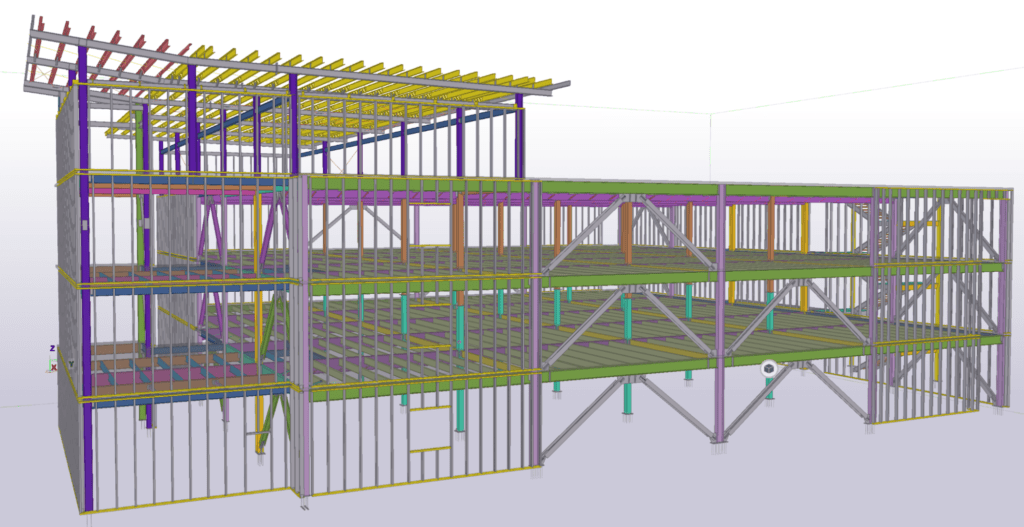
2. The Price Of Steel
Steel prices are influenced by various changing variables, including:
- Seasonal supply and demand fluctuations: Because iron ore is an important steel component, its price has an immediate impact on steel costs. The price of Iron ore fluctuates based on seasonal changes in production and mining activities.
- Supply and demand: Steel prices are determined by basic principles of supply and demand. When there is a lot of steel required, the supply decreases, causing the cost to rise.
3. Fuel Costs
The cost of transporting materials is also an important element that affects steel prices. Shipping costs are frequently determined by the price of fuel and the transport route. Oil and steel prices fluctuate in tandem.
4. Buying Power
Buying in bulk always saves money and is a direct factor in the final cost of a steel building. Large manufacturers have a distinct advantage, as they can make major purchases when the market is down, keeping their buildings more competitive than a small manufacturer.
5. Custom Features
The complexity of the design is a major consideration. A four-walled “box building” with a gabled roof costs far less than a custom-designed two-story school building. The more complex the architecture and the stricter the application’s requirements, the greater the cost.
What to Expect From PEMB Manufacturer
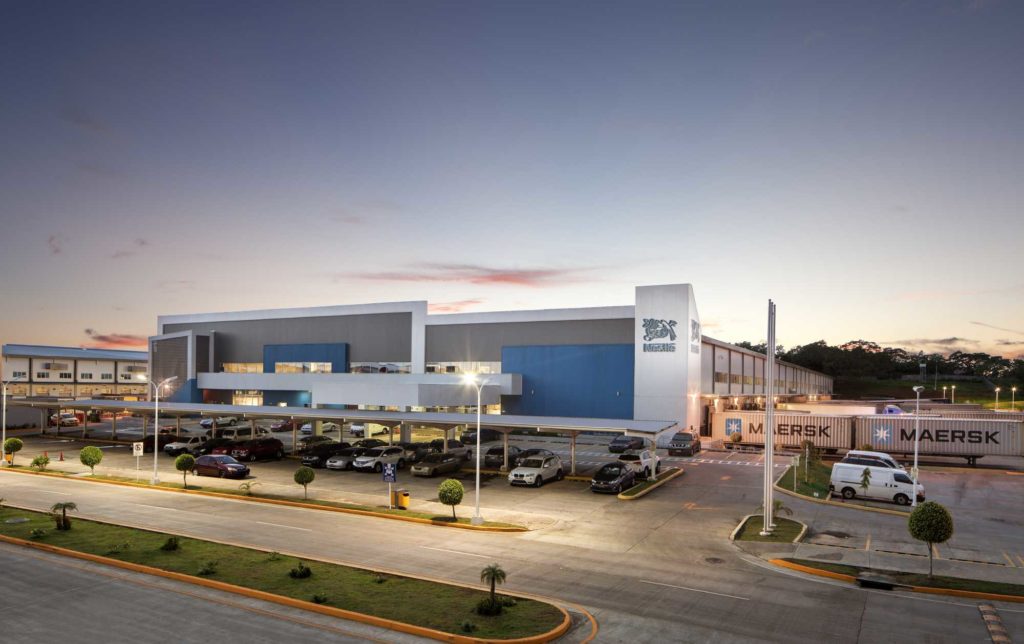
Pre engineered steel building manufacturers design and produce structures that meet the clients’ aesthetic and design requirements while ensuring that all the local building codes and loading requirements are adhered to. Most manufacturers are not known for unloading or participating in construction projects. However, they can speed up the on-site installation process by offering:
- A detailed digital drawing of the building to the project’s foundation engineer.
- Numbered and pre-cut components that mirror the detailed digital drawings.
- They also provide anchor bolt patterns and a guide manual for the installation process.
- Field service support for your workforce during erection.
Partnering with pre engineered metal companies such as Allied Steel Buildings, you should expect nothing short of world-class professionalism coupled with years of experience in customizing steel buildings, estimation, and project delivery.
Select the Right Steel for your PEMB
PEMB projects depend on the quality of the steel, which may affect their long-term success. The improper steel grade can cause structural problems, higher maintenance costs, and safety dangers. Nobody wants that! Let’s discuss how to choose the proper steel for your next PEMB.
Grades and Standards of Steel
Steel quality depends on grade and industry norms. Different steel grades have different qualities, making them appropriate for different uses.
ASTM Standards:
Steel product quality and performance are guaranteed by ASTM standards. ASTM compliance is essential for a dependable steel supplier.
Grades of Steel:
Steel grades like A36, A500, A992, and others are common. Each grade has variable yield and tensile strengths for different load-bearing needs. A500 is appropriate for load-bearing applications due to its high yield strength, whereas A36 is adaptable and employed in structural components.
Steel Thickness and Weight Matter in PEMB
The weight and thickness of steel are equally essential.
Thickness:
Project structural requirements determine steel thickness. Thicker steel is stronger, but heavier and more expensive. Ideal thickness depends on building size, purpose, and load-bearing capacity.
Weight:
Steel weight matters in transportation and building logistics. Heavy steel requires special handling and higher transportation expenses. Weight must be balanced with structural integrity.
Impact of Steel Coatings and Finishes
Maintain your steel investment with coatings and finishes.
Galvanization:
This method coats steel with zinc for corrosion resistance. In weather-exposed constructions including bridges, fences, and industrial equipment, galvanized steel is used.
Other Coatings:
In addition to galvanization, powder coating and painting can improve steel durability, appearance, and functionality. These coatings can protect against corrosion, UV radiation, and other environmental variables.
Allied offers many colors and finishes.
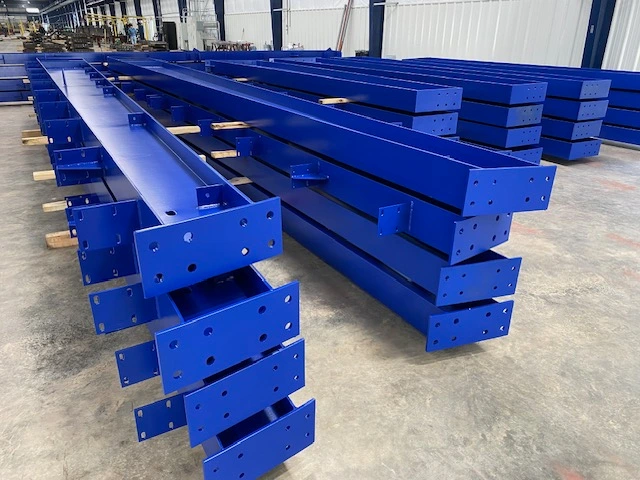
Welding and Fabrication Quality
Steel fabrication and welding quality are essential for project structural integrity.
Expert Manufacturing:
Steel components must be fabricated properly to preserve structural integrity. Steel fabrication experts can cut, shape, and join steel precisely.
Standards for welding:
The American Welding Society (AWS) standards ensure robust, trustworthy connections. To ensure parts are correctly fused and defect-free, welding requires competent specialists.
Certification, Testing:
Steel quality is verified by certification and testing.
Certifications:
Find ISO 9001-certified suppliers. This accreditation shows that the supplier has a quality management system to assure product and service quality.
Steel Testing:
Get steel tests to confirm its qualities and conformity with norms. Common tests include tensile, impact, and chemical analysis. These tests verify that the steel meets strength, ductility, and composition standards.
Credibility and Experience of PEMB Suppliers
Steel quality depends on choosing a reliable supplier.
Find PEMB suppliers:
Find steel suppliers with a track record by doing your research. Find vendors with high-quality items and similar project experience.
Experience:
Consider the supplier’s steel experience. An experienced supplier with a track record of successful projects is more likely to have the expertise and resources to meet your objectives.
Allied has delivered over 5,500 projects in 65 countries.
Cost vs. Worth
Cost is vital, but quality steel’s long-term worth is crucial.
Long-term costs:
High-quality steel reduces maintenance and repair expenses, saving money over time. Any early cost savings may be negated by more frequent maintenance and repairs on lower-quality steel.
Value Engineering:
Value engineering can help you save money without sacrificing quality. Consult pros. Value engineering analyzes the project’s design to cut costs without compromising performance or safety.
Extra Considerations
Sustainability:
Choose steel with environmental consideration. Find vendors that value sustainability and supply recycled or low-carbon steel.
PEMB Lead Times:
Make sure the steel supplier can meet your deadline. Consider production capacity, inventory levels, and delivery lead times when choosing a supplier.
Consider these variables to choose the correct steel for your construction project. The structural integrity, longevity, safety, and value of your structure will be improved by using high-quality steel.
Allied’s focus on quality
To assure quality, Allied prioritizes traceability and mill certificates for steel products. When you buy an Allied Building, you know it meets or exceeds industry standards.
Choose Allied for your next PEMB project.

 Subscribe to our channel
Subscribe to our channel